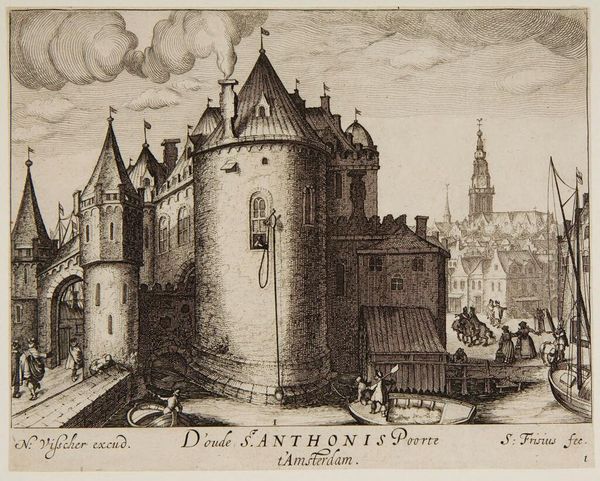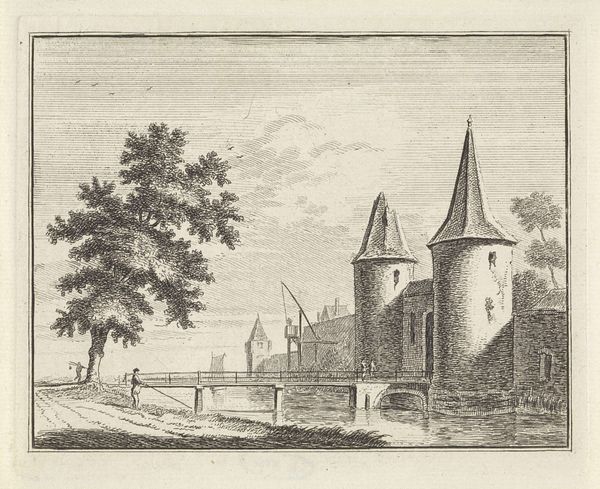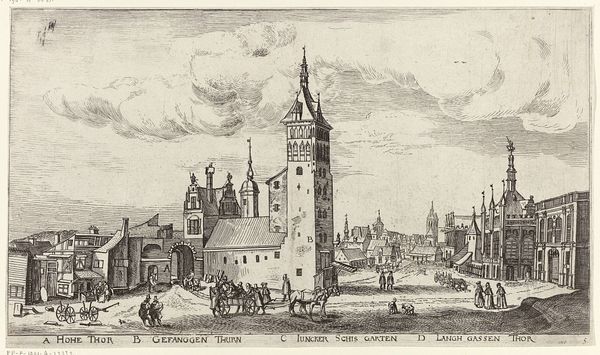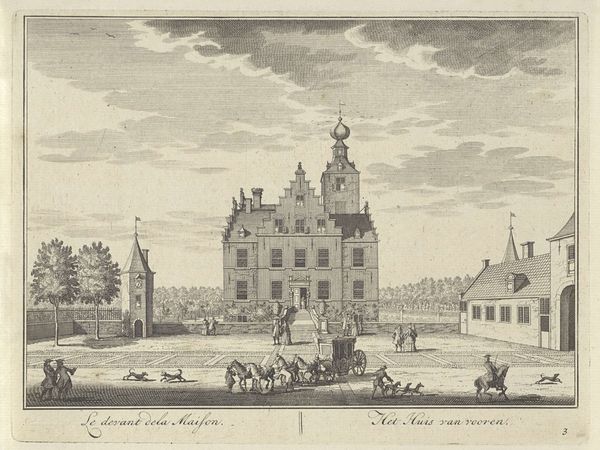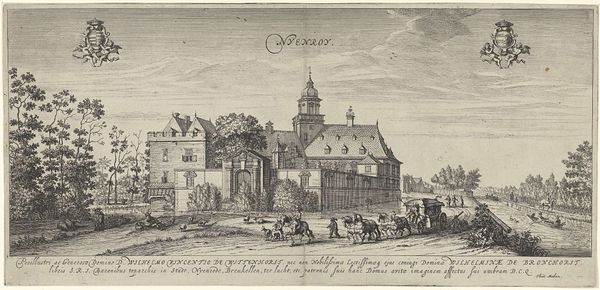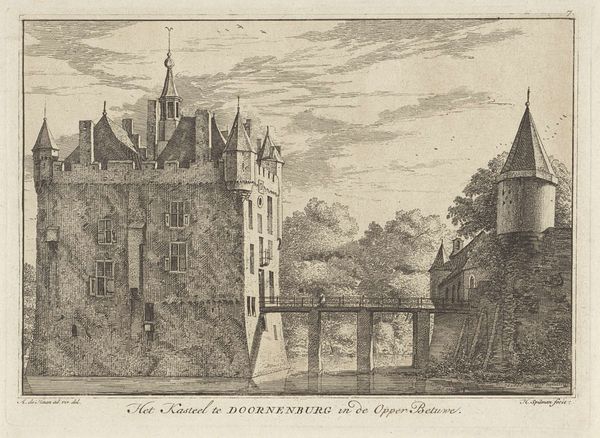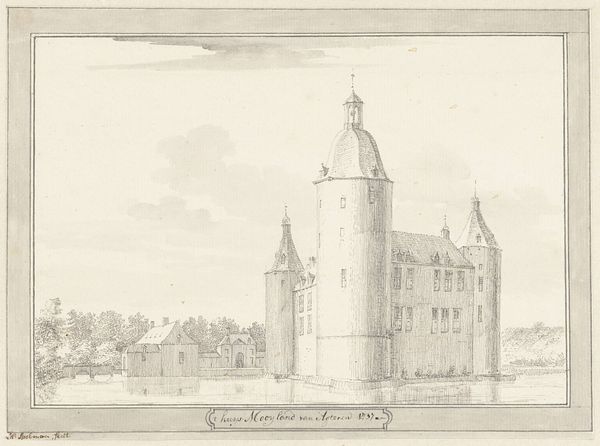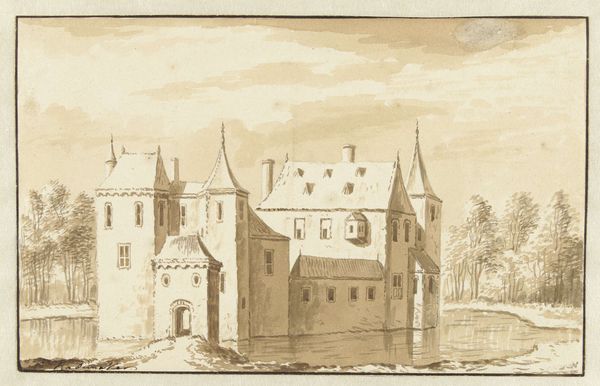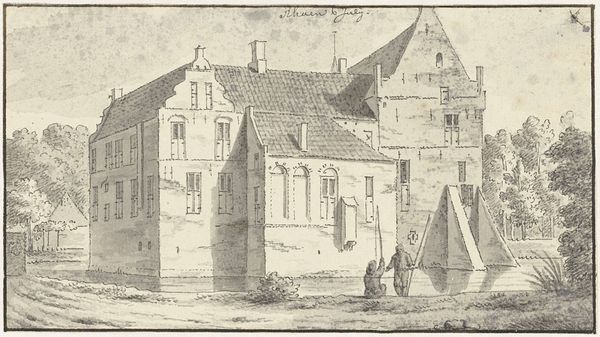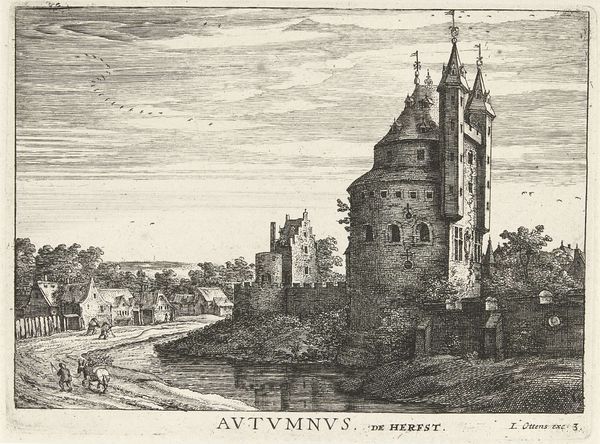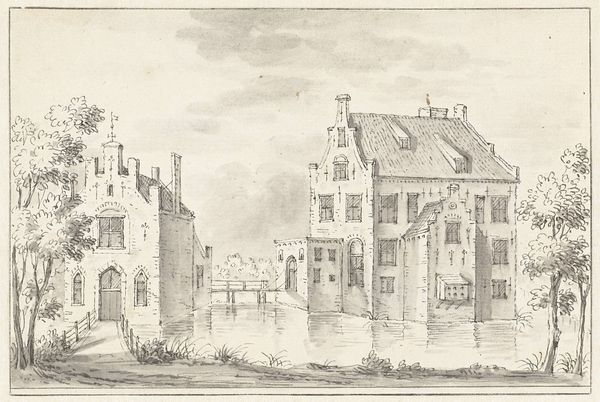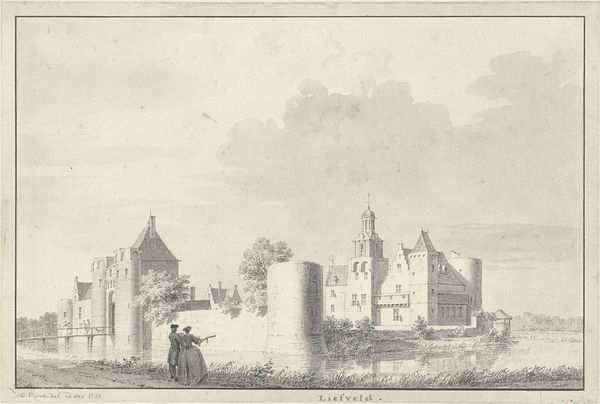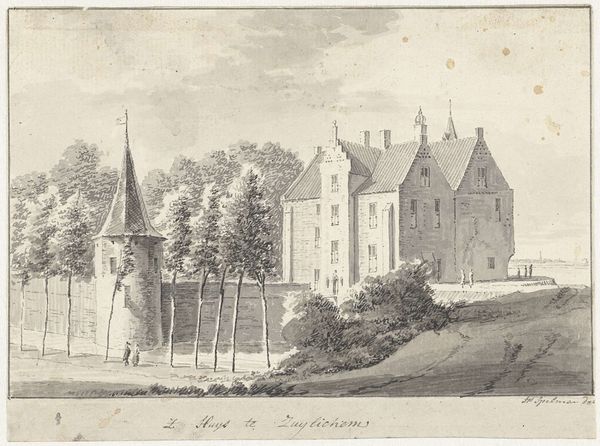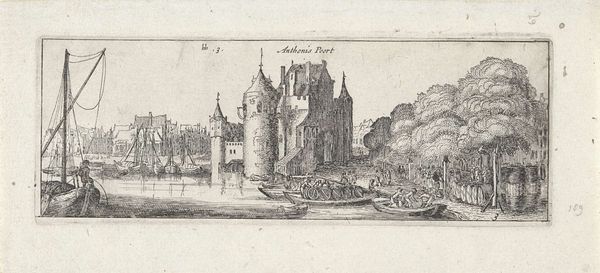
print, engraving, architecture
#
baroque
#
dutch-golden-age
# print
#
landscape
#
cityscape
#
engraving
#
architecture
Dimensions: height 80 mm, width 115 mm
Copyright: Rijks Museum: Open Domain
Editor: We're looking at Abraham Rademaker's engraving, "Gezicht op Kasteel Gansoijen", from sometime between 1727 and 1733. The level of detail, especially considering it’s a print, is amazing. What really strikes me is how it feels like a historical document, almost like a real estate rendering for a noble family. What do you make of this image, particularly within its historical context? Curator: This engraving speaks volumes about the relationship between art, power, and the burgeoning public sphere in the Dutch Golden Age. Rademaker wasn't just documenting architecture; he was participating in creating and disseminating imagery that upheld specific social values. Editor: So it’s less about pure aesthetics and more about social function? Curator: Precisely. The printing press allowed images like these to circulate widely. This artwork displays Gansoijen castle, yet also serves as propaganda for wealthy land owners to cement their status. In fact, how does the way it's depicted and made accessible change the viewer's understanding of this seemingly distant noble house? Editor: I never thought about how the act of depicting a noble castle for public viewing could actually solidify class structures. Curator: That's precisely the point. Rademaker's print showcases architecture and class but subtly reinforces hierarchies through accessibility. The power resided in the image itself, as much as in the actual structure it represents. This was the rising phenomenon of a public audience for imagery - imagery used to prop up powerful and influential individuals and their possessions. Editor: That definitely changes how I see it. Thanks, that gives me a totally different perspective to consider. Curator: My pleasure. It's important to remember art isn't created in a vacuum and viewing art is an historical and cultural event in itself!
Comments
No comments
Be the first to comment and join the conversation on the ultimate creative platform.
